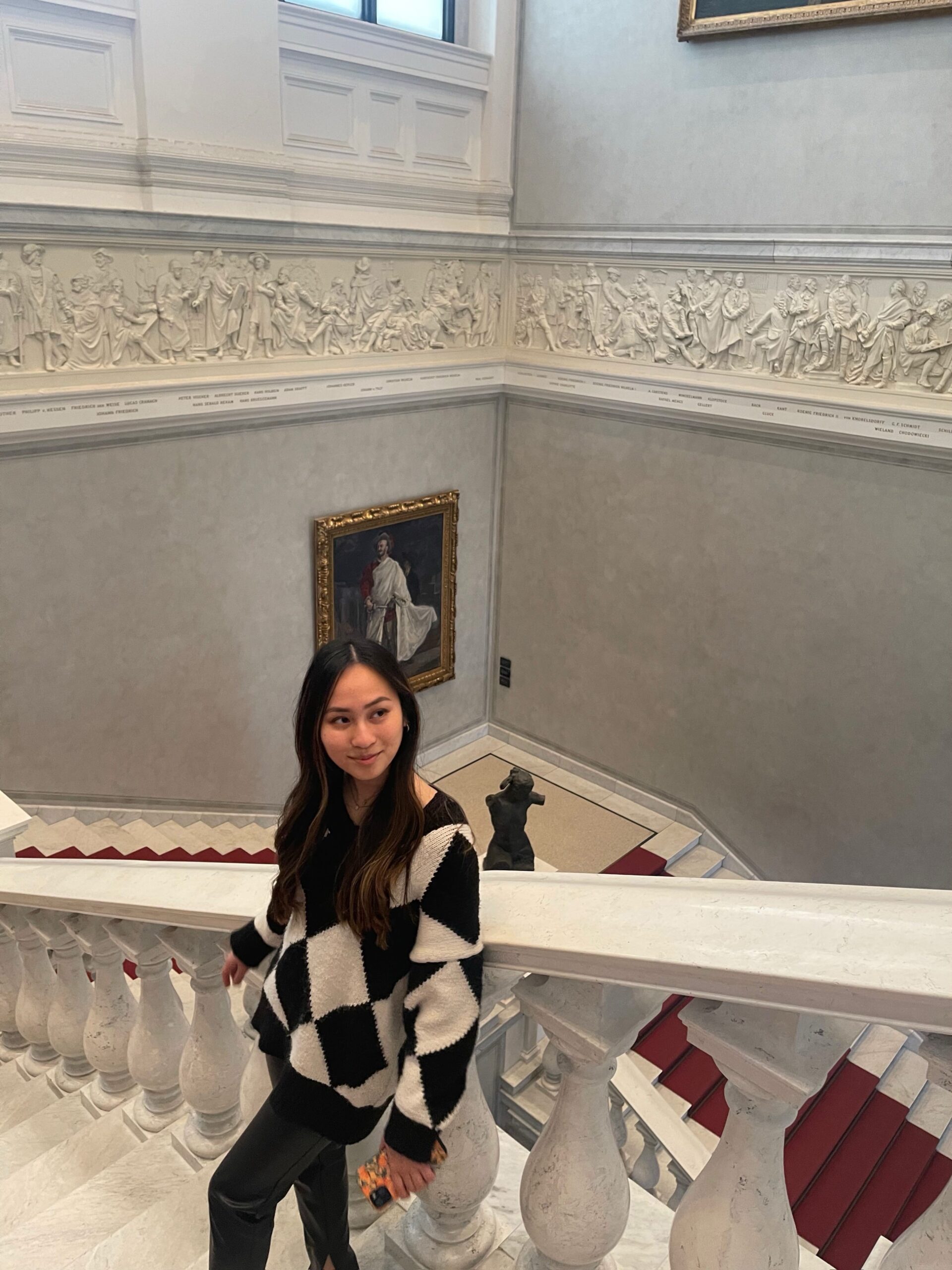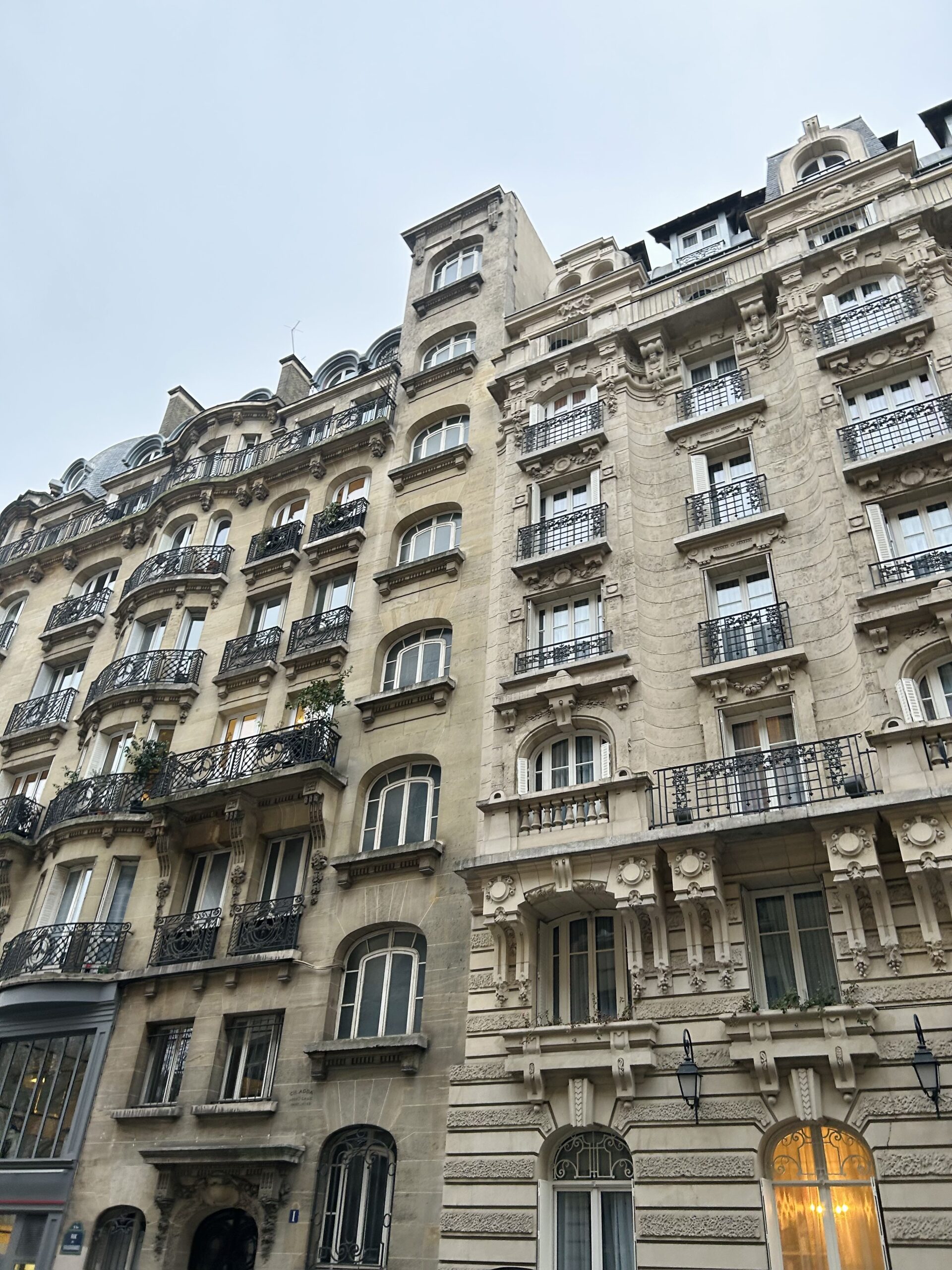Paris: A Case for Maximalism
By: Joanna Lin, Huntsman ’24

Sciences Po, France
Joanna is one of the Semester Abroad Global Correspondents writing and sharing her experience abroad during the Spring 2023 semester. Follow along with the group of correspondents on our blog and look out for their images on the @pennabroad Instagram feed.
When it comes to Paris, “minimalism” is probably the last word that comes to mind.
From the textured limestone façades of apartments to the Roman Corinthian columns at every corner and some outrageously detailed door handles, Paris is a city built with the value of beauty. And it shows–more tourists choose to come to Paris than to any other city in the world.
 As an American currently studying abroad in France’s capital, the consistently ornamented urban landscape is a contrast to the simplicity of the Midwest where I grew up and even to the city where I study, Philadelphia—one of the most historic cities in the US. Especially starting in the late nineteenth century, cities in the United States began rapidly expanding at a time of industrialization, modernity, and an increasingly dynamic movement of people and goods around the world. Places like New York City became icons of the country’s ability to house an exploding population of immigrants. And with the invention of Louis Sullivan’s skyscraper, unprecedented speed of construction and scalability became omnipresent in American cities.
As an American currently studying abroad in France’s capital, the consistently ornamented urban landscape is a contrast to the simplicity of the Midwest where I grew up and even to the city where I study, Philadelphia—one of the most historic cities in the US. Especially starting in the late nineteenth century, cities in the United States began rapidly expanding at a time of industrialization, modernity, and an increasingly dynamic movement of people and goods around the world. Places like New York City became icons of the country’s ability to house an exploding population of immigrants. And with the invention of Louis Sullivan’s skyscraper, unprecedented speed of construction and scalability became omnipresent in American cities.
Yet, this impressive urban growth didn’t come without its trade-offs. In the name of minimalism (or international style, or Bauhaus), so much of contemporary real estate in the US started to resemble an Apple store: glass, blank white walls, and a company logo as the focal point. Granted, Apple stores have their place in society (I’m writing this on an iPhone). But when everything deemed “non-essential” is stripped away, there’s less incentive to preserve and value a space that feels easily replicable. The best way to (want to) make a place last, according to Paris, seems to be to make it beautiful.

Not that Paris doesn’t have modern, industrialist elements that are artistic in their own right (think the Louvre pyramid, the Eiffel tower, or the engineering spectacle of the Louis Vuitton Foundation). Rather, Paris celebrates an attention to detail and intricateness by making it the norm rather than the exception. This can come at the cost of some efficiency compared to the US: cozy one-lane alleys where people are prioritized over cars rushing to a destination, historic street names that give no hint to their location (it’s easy to guess that Fifth Ave is next to Fourth Ave, but not quite that Rue Saint André des Arts is next to Boulevard Saint Germain), and 6 street intersections that most definitely don’t follow the 90 degree, orderly grid system standard to the US.
Ultimately, these trade-offs work for Parisian society—and are what makes Paris, so, Paris (to be cliché). After all, humans are drawn to shape, color, pattern, and variety. As a student majoring in real estate with a love for architecture, I’m especially interested in how Paris’ built environment embraces this human tendency—and what this says about the country’s history and values. And as I continue my semester abroad, I’m excited to continue discovering this beautiful, maximalist city.
The Semester Abroad (SA) program offers undergraduate students the opportunity to study in a new global community through extended study for a semester or year. Penn Abroad partners with top institutions around the globe and collaborates with Penn’s undergraduate schools to offer programs for students across academic disciplines.